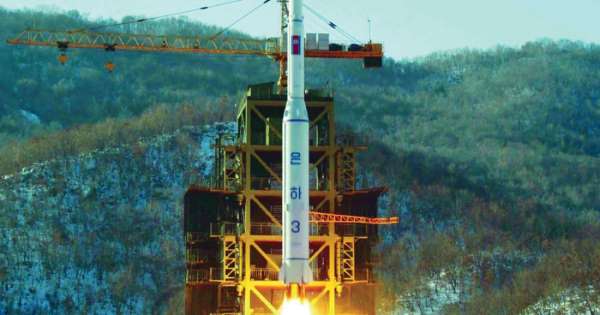The credibility of the expanded U.S. nuclear deterrent is a critical issue that goes beyond the issue of Japanese psychology and perception; it potentially affects the direction of Japan’s security policy,
Japan’s faith in US extended nuclear deterrence had been shaken even before the Trump era. Since the end of the Cold War, China has steadily modernised and built up its nuclear forces, and the survivability and penetrability of its strategic nuclear forces targeting the United States has improved. In the 2010s, North Korea bolstered non-strategic nuclear forces targeting Japan and moved towards the acquisition of strategic nuclear forces that kept the United States within range. These developments not only heightened Japan’s threat perception on China and North Korea but also made Japan increasingly concerned about a possible decoupling between Japan and the United States: “Will the United States defend Japan even if its mainland is exposed to danger?”
The victory of Donald trump, who sharply criticized the Japan-us Alliance for its inequality and gave verbal approval to Japan’s nuclear weapons during the 2016 us presidential election campaign, has sparked General skepticism about the US being reluctant to engage in Japanese security.
However, immediately after his inauguration as us President, trump issued an encouraging statement following a summit with Japanese Prime Minister Shinzo Abe: “the us Commitment to protect Japan through the full range of US military capabilities, both nuclear and conventional, is unwavering.” In response to North Korea’s ballistic missile launch the next day, he publicly added, “the United States stands behind Japan, its great ally, 100%.” The determination shown by the new and mercurial us President on the issue of expanded nuclear deterrence has given Japan a sense of security.
More important to Japan was the fact that the trump administration strengthened the us commitment by building up its nuclear forces. Stating that “the United States will increase the flexibility and range of its individual deterrence options for its and allied security forces,” the nuclear posture Review (NPR) in February 2018 announced the development of a non – strategic nuclear force-the low-yield SLBM warhead and the new SLCM. NPR showed them as alternatives to TLAM-N, which contributed to deterrence carried out to U.S. allies in Asia.
This measure was exactly what Japanese conservative politicians and security officials have sought in order to close the gap in the US escalation ladder. For this reason, the Abe administration praised the NPR as demonstrated by the Foreign Minister’s comment that the NPR clarified “the US resolve to ensure the effectiveness of its deterrence and its commitment to providing extended deterrence to its allies including Japan.” To be sure, the US building up its non-strategic nuclear forces creates the strategic issue of lowering the nuclear threshold and political issues over the introduction of nuclear weapons into allies’ soil. But, in the current Asian security environment, it also increases the credibility of US extended deterrence.
At the same time, however, the Trump administration has been heightening Japan’s concerns about the US credibility. The president’s dramatic shift in policy towards North Korea has had a particularly large impact. In a sudden decision in March 2018, he elected to meet with Kim Jong-un. The Trump-Kim summit in June brought an end to the strict Complete, Verifiable, Irreversible Denuclearisation (CVID) expression that had hitherto been used to describe US demand’s vis a vis Pyongyang’s nuclear weapons program. When North Korea launched a number of short-range missiles in the summer of 2019, the Trump administration repeatedly stated that it did not see that as a problem.
On the surface, the Japanese government has acknowledged the US shift in North Korean policy. But the change could leave Japan feeling somewhat skeptical about Washington’s will to provide extended nuclear deterrence. The Abe administration had been applying maximum pressure on North Korea in collaboration with the Trump administration, with a focus on CVID. But the United States changed its policy without prior consultation, effectively leaving Japan behind. The Japanese reconfirmed Trump’s unpredictability and is increasingly worried that he may make a “deal” with North Korea that ignores Japanese security.
More specifically, Japan is concerned about the possibility of agreements on freezing strategic nuclear forces that reach the United States, allowing Pyongyang to maintain non-strategic nuclear forces that do not reach the United States but keep Japan within range. The Trump administration’s acceptance of North Korea firing short-range missiles shows that this concern is hardly misplaced. If the United States were to reach such an agreement, Japan will conclude that Washington has sacrificed the security of an ally for the sake of its own interests. This would decisively increase Japan’s feelings of distrust in the United States as a provider of extended nuclear deterrence.
As the repeated contradictions of the us President’s previous statements and his unfulfilled promises, including a sharp shift in North Korea policy, have increased the uncertainty of US intentions, the credibility of the us expanded nuclear deterrent has become more dependent on its nuclear capability. In these circumstances, if the us nuclear forces are not strengthened as planned in the DPR, us commitments to protect Japan and other allies can be seen as empty promises and bluff.
(Shingo Yoshida is an associate
Professor of the faculty of law,
Like us on Facebook to see similar stories
Please give an overall rating of the site:

Be the first to comment on "Nuclear deterrence: Mixed messages for Japan"